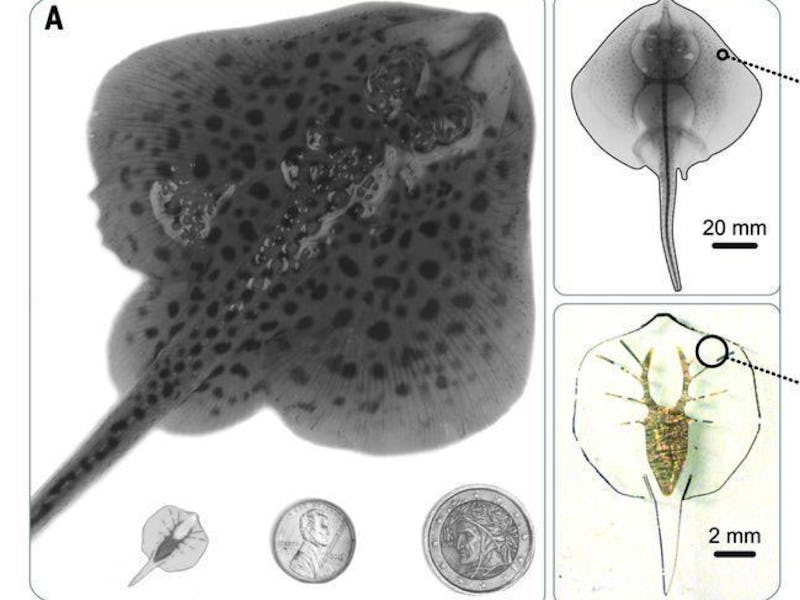Stingray Robot Powered by Rat Hearts Can Swim Towards Light
The team's leader has described it as a biological life-form.

Harvard researchers have unveiled a new miniature robot, powered by the cells of rat heart muscle, capable of detecting light and swimming towards it. Yes, really.
The robot was unveiled in a paper published in Science on Friday, written by Sung-Jin Park et al. The robot is a tenth of the size of a normal stingray and is made up of 200,000 rat heart cells, grown on the underside of the robot.
“I think we’ve got a biological life-form here.” said Kit Parker, a Harvard bio-engineer that led the team behind the robot, in an interview with Popular Mechanics. “A machine, but a biological life form. I wouldn’t call it an organism, because it can’t reproduce, but it certainly is alive.”
The stingray is made up of four layers. The first, a silicon layer cast in titanium, represents a similar material to the one used in breast implants. The second is a golden skeleton, chosen because it had the ideal amount of flexibility for the team’s needs.
The third layer is, much like the first, a specially molded silicon, but this one has been designed to faciliate the growing of the rat muscle cells underneath the stingray. These make up the fourth layer.
The muscles then contract when the robot detects light using what’s known as optogenetics. “The speed and direction of the ray was controlled by modulating light frequency and by independently eliciting right and left fins, allowing the biohybrid machine to maneuver through an obstacle course,” the abstract reads.
The robot is floating in a sea of nutrients, aimed at keeping the fleshy underside maintained after growth. Without an immune system, however, this robot is unlikely to survive outside of the well-kept lab conditions.